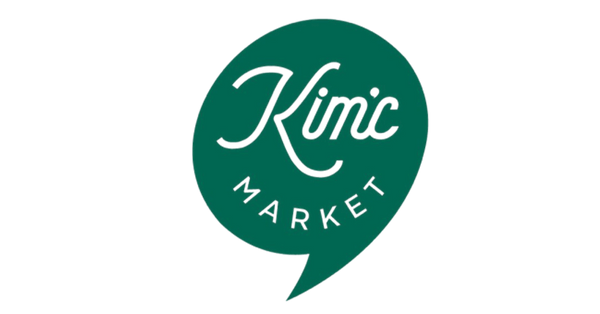Every year, as the frosty embrace of winter begins to loosen, Koreans come together to celebrate one of their most cherished holidays: Seollal, or Korean Lunar New Year. While many think of the calendar new year as the primary marker of renewal, Seollal offers something much deeper—a blend of cultural tradition, familial bonds, and reverence for nature’s rhythms.
For Korean Americans, Seollal bridges the ancestral homeland with modern life in the United States, offering a powerful way to stay connected to heritage. It’s more than a date on the lunar calendar; it’s a moment to reflect on who we are, where we come from, and the ties that bind us.
Why the Lunar Calendar Still Matters
To understand Seollal, we must first appreciate its roots in the lunar calendar. Unlike the Gregorian calendar used in most of the world, the lunar calendar aligns itself with the phases of the moon and the changing seasons. For Koreans, this system is more than a historical relic; it’s a living guide that still informs agriculture, holidays, and cultural traditions.

Farmers, for example, follow the 24 Jeolgi (절기)—24 seasonal divisions that help determine planting and harvesting times. Among these, Gokwoo (곡우), which occurs in late April, is crucial for tea growers. Tea leaves picked before this date are prized as Woojeon (우전), meaning “pre-Gokwoo,” for their delicate flavors and unparalleled quality. This timeless practice illustrates why Koreans continue to honor the lunar calendar: it keeps them connected to nature and its wisdom.
The lunar calendar also underpins holidays like Seollal, linking the celebration to larger cosmic cycles. In a fast-paced modern world, it’s a poignant reminder of the importance of slowing down and tuning in to life’s natural rhythms.
Preparing for Seollal: More Than a Holiday
The days leading up to Seollal are as significant as the holiday itself. Families across Korea (and Korean American households) dive into preparations that blend practicality with tradition. Homes are cleaned meticulously—a symbolic gesture to sweep away bad luck and welcome good fortune. Elders often visit markets to gather the ingredients needed for the holiday feast, ensuring that each item on the Charye (차례) table is fresh and abundant.
The Charye table is the heart of Seollal. Laden with symbolic foods, it honors ancestors and seeks their blessings for the new year. Among these dishes, rice stands out as the most essential. As Korea’s staple crop, rice symbolizes sustenance, prosperity, and familial continuity. Other dishes, like tteokguk (떡국)—a soup made with sliced rice cakes—are equally symbolic, representing growth and renewal. Eating tteokguk is more than a tradition; it’s a ritual of entering the new year with gratitude and purpose.

The Morning of Seollal: Charye and Sebae
On Seollal morning, families rise early to perform Charye, an ancestral rite that dates back centuries. Food offerings are arranged on the table with care, following specific customs. Each dish carries meaning: fruits for vitality, fish for abundance, and jeon (savory pancakes) for harmony.
After the rites, it’s time for Sebae (세배), a ritual in which younger family members bow deeply to their elders. This bow isn’t just about respect—it’s a way to thank elders for their guidance and support. In return, the elders offer heartfelt blessings and sebaetdon (세뱃돈), small gifts of money in colorful envelopes. For children, Sebae is a moment of excitement, with the cheerful anticipation of these symbolic rewards.
 *Source: 아이클릭아트
*Source: 아이클릭아트
The Joyful Side of Seollal: Games and Festivities
While the morning rituals are steeped in reverence, the rest of the day is all about fun and connection. Traditional games like Yutnori (윷놀이) bring families together in spirited competition. Using wooden sticks and a game board, Yutnori is a test of strategy and teamwork, often accompanied by laughter and cheering.

Other pastimes include kite flying and top spinning, both beloved by children. Elders often share stories from their youth, creating a bridge between generations. These moments of play and storytelling capture the festive essence of Seollal, ensuring that the day is as joyful as it is meaningful.
Seollal Abroad: Korean Americans and Lunar New Year in the U.S.
For Korean Americans, Seollal is both a cultural anchor and a way to share heritage with a broader community. In cities like New York, Lunar New Year has become a recognized holiday, with public schools closing in observance. This year, Seollal falls on January 29, and celebrations across the city reflect the holiday’s growing significance.
Young Asian Americans often organize pop-up markets, showcasing Asian artists, craftsmen, and food vendors. These events blend tradition with modernity, creating spaces for cultural exchange and community building. From handmade hanbok-inspired jewelry to fusion dishes that reinterpret classic flavors, these markets highlight the creativity and resilience of the Korean diaspora.
The Flavors of Seollal: A Culinary Celebration
Food lies at the heart of Seollal, connecting families across time and space. Beyond tteokguk, dishes like jeon (전)—savory pancakes filled with seafood, kimchi, or vegetables—bring color and flavor to the table. Sweet treats like hangwa (한과), made with rice flour and honey, add a touch of indulgence. Hangwa includes many Korean traditional cookies like yakgaw, yugwa, gangjeong, and jeonggwa.

*Source: Bellflower Jelly in Soybean Powder, Kim’C Market

*Yakgwa made of wheat flour, honey, rice wine and persimmon
For many Korean Americans, preparing these dishes is a way to preserve tradition and create new memories. It’s not just about taste—it’s about the stories and emotions each dish carries.
The Deeper Meaning of Seollal
Seollal isn’t just a holiday; it’s a philosophy. It invites us to pause, reflect, and reconnect—with family, nature, and ourselves. The holiday teaches us the value of gratitude and the beauty of beginnings.
For those celebrating in the U.S., Seollal is a chance to honor Korean roots while forging new traditions. It’s a day to gather with loved ones, share stories, and remember that no matter how far we may roam, our heritage remains a part of who we are.


